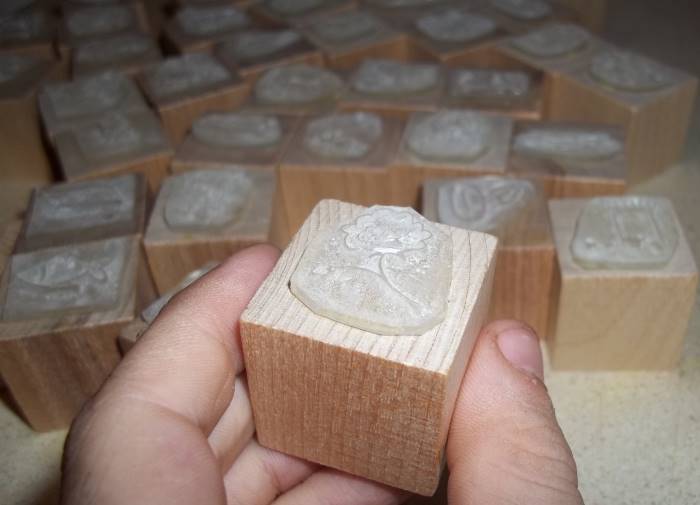MBT keeps catching me ;)
I'm always sad that you don't do "school days" posts from your house.
Why don't I? I've been asking myself a similar questions for a couple of years now. I'll post on projects, I'll post on studies, and I did do something of a
sample day a while back (wow! Just pulled it up - it's from 2 years ago this month! and it was nothing 'special' but it was typical).
But really, looking at the previous post..... that's our days. We're pretty relaxed about specifics, but rigid about expectations - I expect the concepts to be mastered while balancing the reality of my son's needs. I run two businesses out of my home, teach in the atrium 5 days a week, tutor ever-changing groups of children; he has tae-kwon-do, his Lego projects and his books and games that he wants to get to, so he gets his chores done, works on his school projects mixed in with his other personal projects - and it all just sort of happens. Not always on MY time table (how many times it is 11 at night and I wanted to give a new presentation that day and need to hold off another day? Yeah, that has happened many more times than I care to admit), but when the presentation happens, it is always the "right" time.
Summary??? We just don't have "school time" - it is all mixed into our entire day. If I give a new presentation at 9 in the morning or 9 at night, is just based on our very-similar-to-unschooling approach. I have the responsibility to give him the keys; he has the responsibility to learn those keys, assure his "local educational requirements" (for this year: MY requirements) are covered; then he has the freedom to follow his interests along with the corresponding responsibility TO follow his interests, go deeper - and not just "slack off".
We have a routine, rather than a schedule.
There is one major difference between now and 3 years ago: at upper elementary, it is almost ALL projects now. Or studies of some sort. Less "new presentation on a specific skill" and more "develop the use of this skill previously learned".
 |
From 1st year of lower elementary -
life and school are "one"
Interestingly enough - without the Montessori materials
becoming "toys", they are part of our every-moment lives |
For example in math: doing more difficult and/or more practical life mathematics problems, creating notebooks of the Primary Challenge Math (
review post coming soon), working on his
Pet Store math project (took a LONG hiatus when the computer holding that file fried - just pulled it off the hard drive last week).... We do have math presentations yet to do - in several chapters, but I know the reality is, I present the keys, we find a real life application for it and we review the concepts as needed. If we finish before adolescence, great (I think we will....); if we don't, there IS some wiggle room. Even if we continue to review concepts and go deeper, I fully anticipate we will have begun every topic/presentation before
adolescence.
In language, he is "done" with the album, but needs some review with the sentence analysis work (mostly so I can check materials I am developing, but also for his own review), he reads and studies literature to no end, and he is increasing his depth of writing skills, he is
practicing calligraphy --- but the official lessons are "done". He does need to get into a book discussion group of some sort (think "Junior Great Books" style would be perfect!). We'll continue to review the Great Lesson there. He is also doing
Cover Story and writing some of his own creations.
In history, he is still going deeper and deeper with ancient history (LOVES IT!) and slowly plugging his way through
US History (a huge bore for him - this has been a LONG process). He has also been going deeper with the history work in the
Catechesis of the Good Shepherd atrium, getting more into
typological studies, History of Israel and more. At least this work is pulling him more and more into closer-to-modern times. We'll get there... right? ;) He is technically "done" with this album as well - but review presentations and going deeper with particular topics are always a necessary thing, even in the classroom. Now is the time for his own personal studies and interests.
In music, we are definitely "behind" --- too much else going on. NEED to get those tone bars set up at home! But he continues with the piano (slowly - he is mostly self-taught, so it's taking time), loves to sing, we analyze music, he loves classical music, and all things Lord of the Rings/Hobbit movies.
Biology - we're
still going strong on the herbs. We're in need of doing the more complex scientific classification material; otherwise we've
done the album a couple of times and will cycle through it again, going into deeper studies - with full-on animal dissections, using the microscope, and....
finishing up remaining suggested experiments/demonstrations in the biology and geography albums. We could probably work on some more memorization of things like state capitals, but we play a lot of geography games. And we do have some
economic geography and a few presentations remaining in each of the chapters (except the first 2?) but honestly - not just very much "new" here - what is left is review and going deeper.
Geometry - we DO need to finish up the last couple of chapters. We just kind of stopped at one point. Interest is there - my own time is not. Area and volume concepts need to be thoroughly reviewed and solidified - all else is there.
Wow. Did I just say all that? He'd be in 1st year upper elementary at a Montessori school right now. With 2 more years to go after this one.
We are right now living exactly what I've been saying in all sorts of places: the AMI albums have allowed us to learn the keys, explore personal interests, have time for real life and relationships with other people, without having to worry about "getting it all in". Sure, there are areas I feel behind in - but I know the depth we've gone to, the amount of time Legoboy has spent in productive personal pursuits - and I'm not worried about it. I thought I was, but now I write all of this out - I'm not.
Non-AMI albums tend to have so much "more", but I'm not convinced they encourage the depth, the personal interest or the true follow-up work --- and I've seen so many families who could benefit from continued Montessori go elsewhere because they were either 1) overwhelmed with the number of presentations/materials or 2) underwhelmed at the response of the children.
And a recent survey of sections such as "human geography" (which includes economic geography) demonstrates that what is truly meaningful to the children to build up cosmic education and "peace education" - just isn't there in other albums. No wonder people keep asking me about the peace education components - I don't have them, because they are all deeply integrated into all of the albums I have.
The math album is HUGE and goes so much deeper than any other Montessori album - the concern there always seems to be on "fitting it all in". There is wiggle room, but again, if we are focusing on the keys, encouraging the children to go deep, create their own problems (with structured guidance from the adult), then they are truly mastering the concepts and CAN move forward at their own pace. If they finish before adolescence, great; otherwise, there is some time.
My son has had time for so many academic personal studies outside the Montessori albums, because he was given the keys, expected to master them, then set free to just BE himself.
To reiterate a point from above, because it is so often missed: I expect mastery of skills presented - and I expect that Legoboy will follow his interests and go deep with this studies. It is an inherent expectation, that when not present, does allow the children to fall into shallow work and never really reaching their own potentials. I expect it (in my words AND my actions), I assure the tools are available to make it happen and get out of the way when needed. :)
You know - part of this unschooling-feel is our school space. We don't have a school room or a school space. We have a home. We have an 850 square foot apartment with a library in my bedroom, sewing, tons of felt, wood-storage (the wood-cutting happens elsewhere), garden in the living room, school materials throughout every --- single -- room (Sh!! Our dissection specimens are in one of our kitchen cupboards - NOT anywhere near food, I promise), Legos (oh dear! do we HAVE Legos), art supplies, books everywhere. And yet, only the bedrooms are "cluttered" - the other rooms are just "full". My living room floor I keep clear. I need space somewhere to just breathe! I will post a "school-home" tour soon ;)
I WANT a dedicated room for school materials, even if we use it for other stuff too - just one place to display all things school. I sometimes wonder if I were ever granted such a gift, would I even utilize it as such - because we DO see all things we do as life-education. Maybe I don't want to change. I say I do. I think I do. But maybe... I don't?
Hm. ;)
















